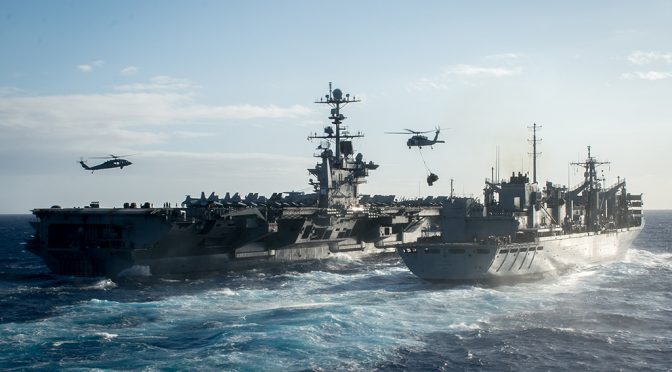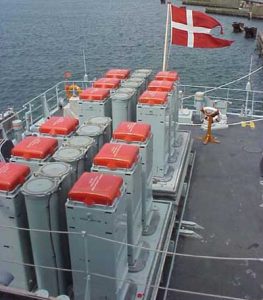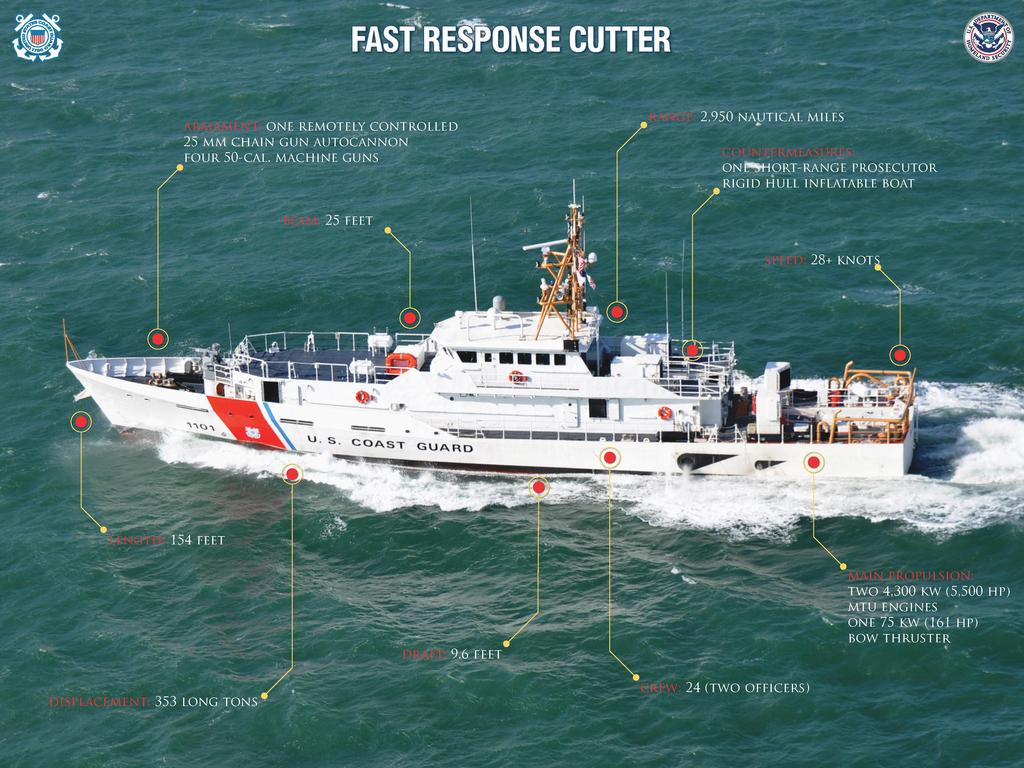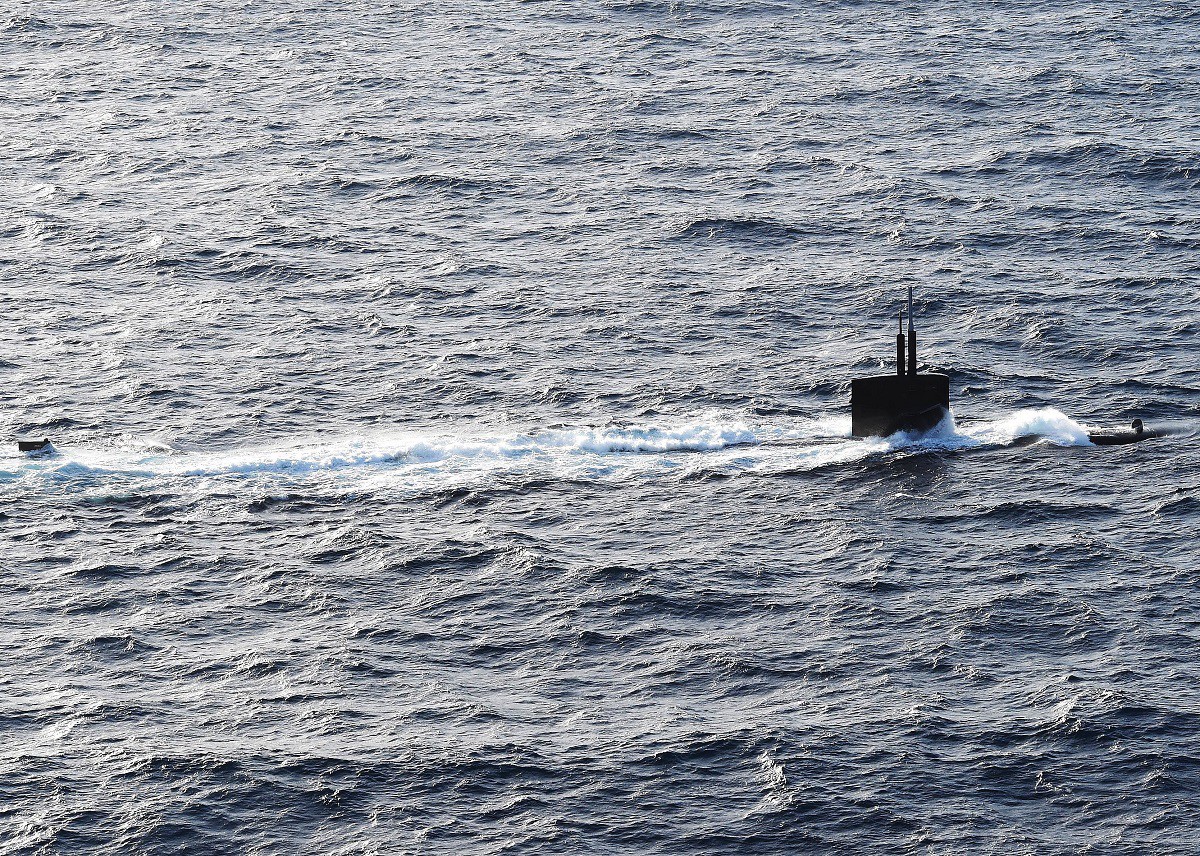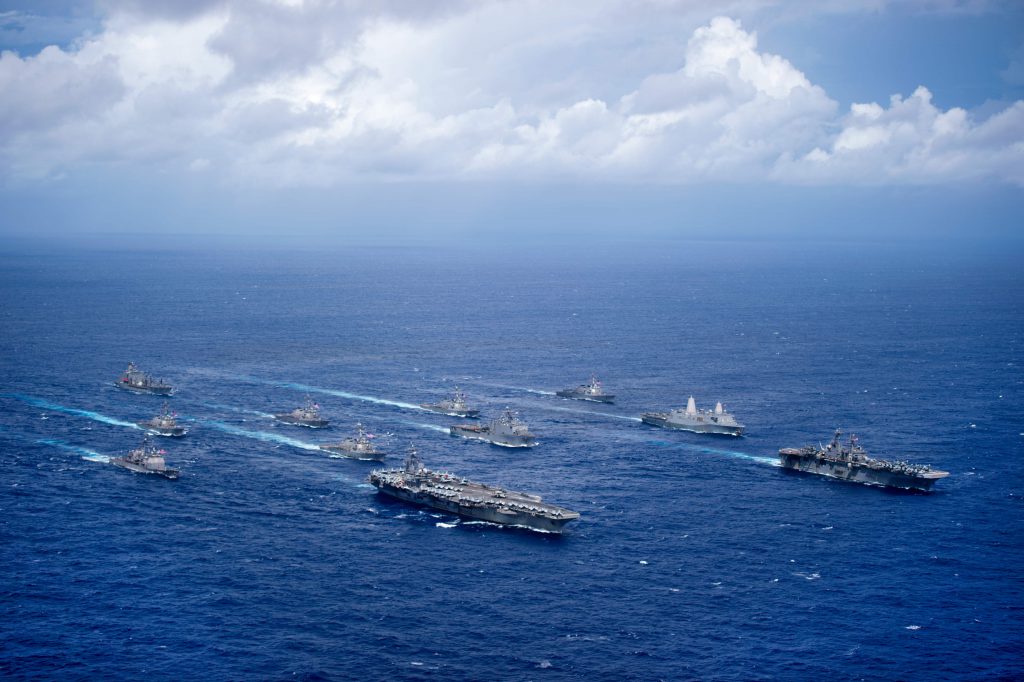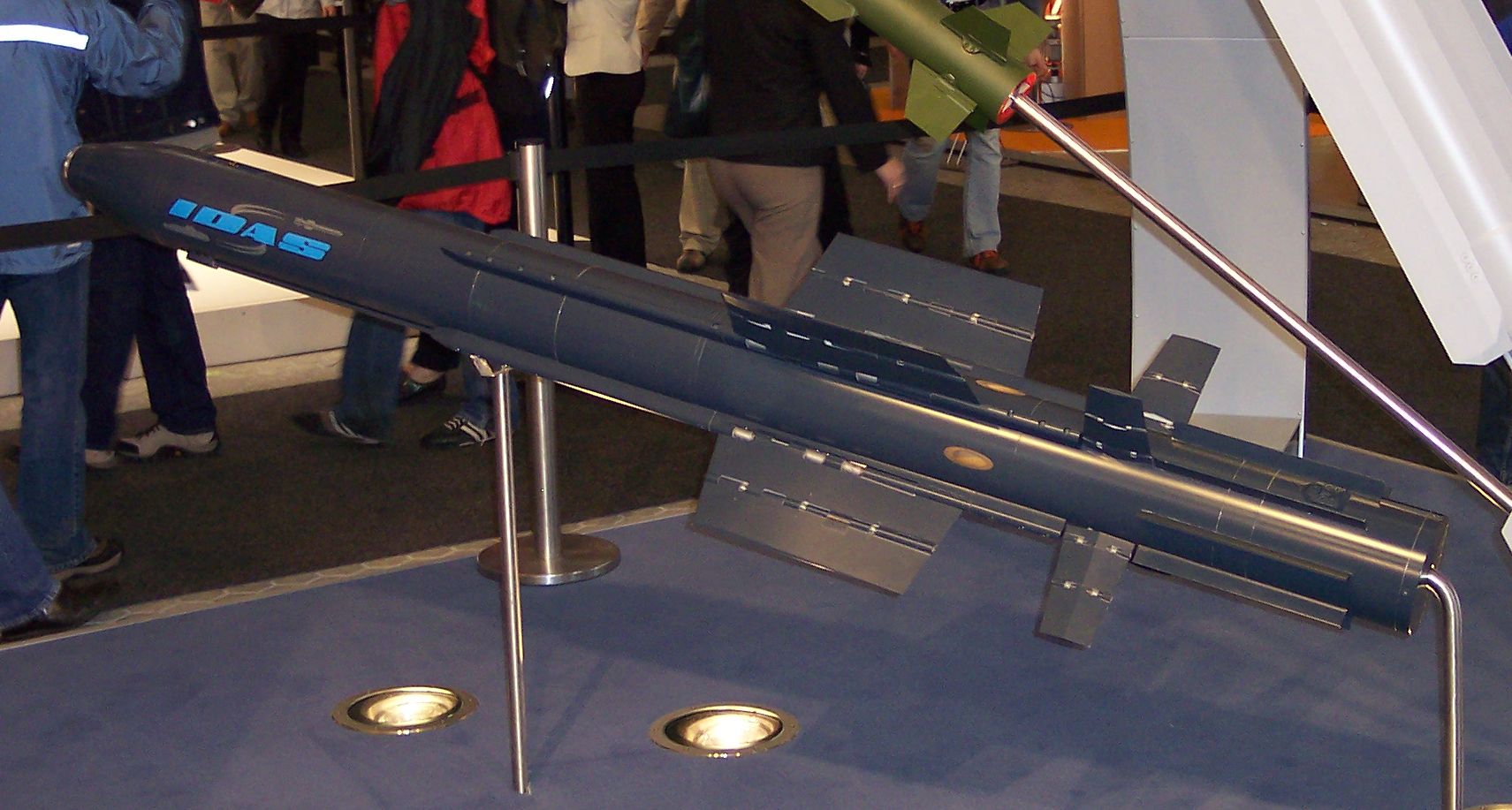Alternative Naval Force Structure Week
By Jan Musil
Rather than the usual discussion of what the U.S. Navy has and how to get Congress to fund more and better ships and systems, this article concentrates on the fleet we ought to be constructing in the decades ahead. 2045 is a useful target date, as there will be very few of our Cold War era ships left by then, therefore that fleet will reflect what we are building today and will build in the future. This article proposes several new ship designs and highlights enduring challenges posed by the threat environment.
A New Transoceanic Frigate Design
The retirement of the Oliver Hazard Perry-class frigates has left a substantial hole, both in terms of surface ship numbers and ASW capability in the U.S Navy’s warfighting capabilities. An understandable move on our part given recent budget pressures, but this author is convinced that we are going to have to replace the transoceanic escort and ASW capability the class provided the fleet.
Perry Replacement
Building a class of frigates that are 21st century versions of the Perry class is an obvious alternative for us to consider. I suggest designing a slightly larger version, say 3800 tons, with a fighting ability heavily focused on the ASW mission. Since the Navy is building plenty of littoral capability in the various LCS classes, this new design should be expressly built to operate effectively in the high sea states the North Atlantic and North Pacific are notorious for generating at regular intervals.
Using the larger turbine engine already in use with the LCS in the new design is expensive, both in construction and operating costs, but not so much more that it makes sense to retain two support and maintenance trails in the fleet and shipyards. Yes, the extra speed will be nice, but in reality is not really necessary. But with the larger engine already baked into the Navy’s operating budget it is better to stick with it even if the operating advantages of more speed in deep blue waters are marginal.
Foremost is the wider beam the bigger turbine will force on the designers. Make a virtue of this fact by making the focus of the new frigate design its helicopter deck, hanger, assigned Seahawk, two Fire Scouts, and ten to twelve TFS buoys. This ship class will exist to provide ASW escort to the CSGs, ARGs and transoceanic convoys in the deep blue.
There will be a 5″ gun to put aboard, the basics of AAW self-defense and plenty of VLS capability for ASW, AAW and the developing distributed long-range strike abilities the Navy has decided it requires. Other than that though, this ship exists to screen against or out and out hunt, submarines.
Those concerned over such a design’s lack of more substantial AAW and offensive capabilities should understand the same argument used to defend the purchase of the original Perrys. Neither the Navy nor the nation can afford to put all three capabilities in substantial measure aboard this small a ship build. We couldn’t afford it with a fifty-six ship build against the Soviet Union and we cannot afford it with the thirty plus frigates we need to build of this new design in the decades ahead.
Hull Design Opportunity
This author shares in the lack of enthusiasm for the use of aluminum in the hulls of the Independence class. But the potential capabilities of the trimaran portion of that class’s design are intriguing.
Whether made of steel or the still-to-be-proven aluminum, a trimaran hull properly designed could provide substantial improvements in stability for helicopter operations in high sea states.
Traditionally Mediterranean navies, the Italians in particular, turned to trimaran designs for speed to use against heavier gunned opponents. With the U.S. Navy speed is never going to be first on a skippers mind in heavily rolling waters, but safely operating the ships ASW equipment, helicopters, and buoys, frequently will be.
So let’s take the time in the design phase to see what can be designed into the new class by utilizing a wide beamed trimaran design, possibly a few more missile tubes and AAW assets can be squeezed in topside if the extra beam is available forward of the hangar deck, even if merely above the waterline. Finally, the offshore oil industry has had some recent success reducing instability in their workboats by moving the bridge all the way forward to the very front of the ship. The result is a vertical, or nearly vertical brow topside with the amidships area given over to work, or in the Navy’s case, fighting space.
This sized frigate should cost the taxpayers under 400 million dollars, probably well under that figure, making the construction of thirty plus ships over the years ahead an affordable investment for the Navy in both the number of ships and our ASW fighting capabilities.
A Flexible New Cruiser Design
In the decade ahead, the U.S. Navy is facing the need to extend and eventually replace the Ticonderoga class CGs now in service. We should look to a flexible new cruiser design that can be adapted for varying purposes through the mid-21st century.
By using a basic class design incorporating the same propulsion plant installed across various adopted designs we will generate very substantial lifetime cost savings. Additional lifetime savings can be gained by using the same bow and forecastle steel framework across the ship classes. A third, smaller, but still meaningful set of savings can be derived from using the same bridge and AAW working spaces layout. This will provide a great deal of flexibility in what sorts of guns, radars, VLS loadouts, helicopter deck and hangar layout details are selected to serve the purposes of a particular cruiser class.
Size
To meet the substantial electrical power needs of the fleet of the future, energize a single railgun if installed, provide plenty of length and beam for the radars of today and tomorrow, enough space to house computers and operators, adequate AAW warfare capability, something from 15,000 to 20,0000 tons is needed. Since every ton added adds significant construction and maintenance costs this author suggests considering a 17,000 ton modern version of the Baltimore-class cruisers built during WW2. Utilizing a proven sea going design like the Baltimore’s for a proven bow and forecastle design for all of the cruiser classes will provide a cost effective way of providing ships with good sea keeping abilities, with fewer design-from-scratch headaches and lower lifetime costs.
Engine Room
A non-nuclear electric power system such as the permanent magnet motor (PMM) originally planned for the Zumwalt class is another important design parameter that needs to considered and decided upon from the very beginning of the design process. Whatever the power plant settled on, it needs to provide enough electrical power to operate one railgun and associated radars, or the extensive radars, computers and refrigerated working space required by the CGs of tomorrow, or the power needs of a long range ballistic radar if installed. All that generation and conversion equipment needs the space provided by a 17,000 ton sized design.
Bridge, CIC, and Working Spaces
This issue comes to the forefront for the AAW class of cruiser that will replace the Ticonderogas. Computers are wonderful tools, capable of providing multiple ways to enable a fighting sailor. They are also demanding, down right finicky and demanding, pieces of equipment that simply ‘just have to be’ at the right temperature, humidity level, amount of electrical power provided and discharged, and are highly intolerant of any variation in these conditions. Sailors are much easier to provide working space for.
But to be effective, the CGs of the future will also need plenty of thoroughly refrigerated space in the bridge, CIC, electronic equipment spaces, and working space for the sailors operating and maintaining all this wonderful gear. And let us not forget the multiple radars that will be installed, ever growing in size and number, that also require space, power, and cooling inside the hull.
Therefore, designing a large, as uniform as possible set of working spaces behind the forward gun and before the ventilation stack, helicopter deck, and hangar is strongly recommended as a third set of crucial design criteria.
This author suggests applying the suggestions above in the cruiser classes listed and briefly described in the following sections.
CS – Scout Cruiser
Putting one railgun on a scout cruiser, with plenty of VLS and helicopter space for needed ISR drones, ASW oriented Seahawk, two Fire Scouts, and ten TFS buoys while completely independent of a CSG is a very useful addition to NATO we can make at a far lower cost than any aviation oriented asset. Particularly since there is a very useful mission for the cruiser class to perform, namely Backfire and Bear hunting in the North Atlantic, North Sea, or potentially even the Barents Sea.
CG – AAW Cruiser
The Navy is going to need fifteen plus AAW cruisers as replacements for the Ticonderoga-class as those Cold War veterans wear out. This class design is easily described as simply upsizing the Ticonderoga to 17,000 tons. Give the class the space and power the radars of today and tomorrow demand to be effective, plenty of CIC and electronic room space for the computers and sailors aboard, and as many VLS as practical and this ship class is ready to go.
CBD – Ballistic Missile Defense Cruiser
This author is far from convinced that putting a long range ballistic missile radar to sea is a wise and prudent idea. It almost certainly is not when in close proximity to a CSG, ARG, SSG or transoceanic convoy, at least on a routine basis.
That said, the majority of the worlds seas are, almost by definition, not in close proximity to our primary ocean going assets. There very well may be occasions in the future when the U.S. Navy can provide a cost effective alternative for the president to consider making use of by building three CBD class cruisers.
This cruiser design is obviously dominated by the enormous radar mast mounted amidships. It is unlikely that a non-nuclear power plant will generate enough power for both radar and a railgun, so it will go to sea with our standard 5” weapon, as much of the base bridge, CIC, and electronic working spaces that can be accommodated once the huge ballistic radar requirements are met. It will also include as many VLS tubes that can be squeezed in, and a standard, one Seahawk-sized helicopter deck and hangar.
The reader can easily come up with alternative cruiser class designs of their own, whether improvements on the three suggestions above or for other mission requirements not considered in this article. But having a flexible base cruiser design to hand, available for development or alternation as the world changes around us seems to be an excellent investment in capabilities for the decades ahead.
CVLN, AORH, and CARN
The author has explored a variety of other ship designs in previous articles that form a part of the fleet design described here.
The CVLN (carrier aviation light, nuclear powered) is intended to operate with carrier task forces, providing a home for the many ISR drones, UUVs, UAVs and buoys needed in the increasingly dangerous A2/AD environment and to prosecute ASW.
The AORH (auxiliary oiler replenishment helicopter) is a ship class based on a modified AOR-sized and double hulled design without a full flight deck, approximately 25,000 tons and oil powered. This class is intended to provide very substantial helicopter and VTOL launching and servicing capabilities, for ASW, amphibious, special-ops or other missions and then executing these missions alongside a large variety of allied nation navies; hence the built in patrol boat capabilities as well as at least one UNREP station port and starboard.
The CARN (cruiser gun armor, nuclear powered) will accompany the fleet’s capital ships to provide defensive AAW capabilities with a primary armament of twelve railgun in order to realize favorable cost exchanges.
Strategic Demands of the Threat Environment
For discussion purposes, this author assumes the usual conventional wisdom about the strategic intentions, announced and anticipated fleet construction plans and patrol utilization patterns of the various major Eurasian major powers are mostly true and applicable.
Russia
Russia has been consistent in describing her intentions in fleet building and disposition. Given her need to disperse naval assets to four widely separate parts of the world, establish and maintain her strategic ballistic missile force, and meet the need for substantial littoral forces. There is only limited Russian ability to impact U.S. interests far from her shores, certainly nothing like in Soviet days.
The Russians have been quite open in their intent to field enough attack submarines to reestablish a 21st century version of the old Soviet anti-convoy abilities in the North Atlantic. They also are aware of the opportunities that present themselves in disrupting trade and generating geopolitical influence in Northeastern Asian waters as well as the North Pacific; though they are frank that pursuing such a strategy in Pacific waters is some distance down their priority list. Given the many needs the Russian fleet has, having enough assets to operate effectively in the North Pacific may always remain a hope and intent rather than a reality.
As always with Russia, from the days of Ivan IV or Peter the Great onward, there is an enormous difference between Moscow’s perceived military needs and her ability to fund them. This will remain true far into the 21st century, regardless of how much or little change Putin manages to introduce as a response to sanctions and the fall in the price of oil.
That said, Russian naval ambitions and intentions have been clearly stated and certainly include creating and maintaining a substantial nuclear powered attack submarine force to be deployed in the North Pacific, North Atlantic, and Arctic as needed. In addition, Moscow clearly intends to continue fielding enough A2/AD protected assets in the Eastern Mediterranean.
China
China has been consistently and thoughtfully expanding the PLANs capabilities and mission choices for years now. This expansion has been quite focused, foremost on improving China’s home defense situation. The PLAN has also established abilities to protect and pursue her interests in and around the two island chains. Finally, China has developed modest naval expeditionary capability for ongoing use in the Indian Ocean.
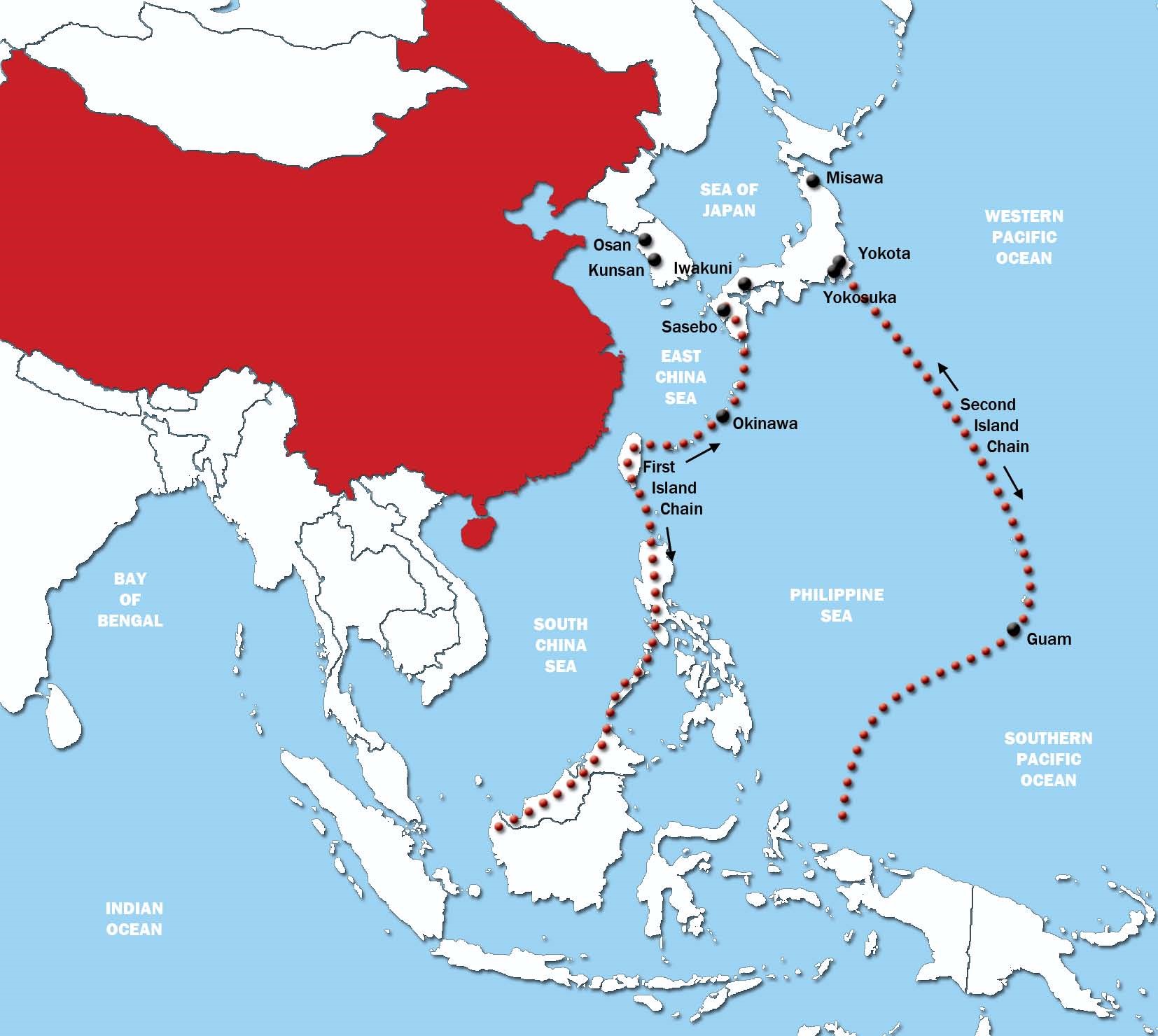
To date there does not seem to be any interest in creating additional substantial capabilities in order to operate far from home waters, much less on the global scale like the U.S. Navy.
Unlike Russia, China does have the financial capability to expand the PLAN if desired, both today and in the decades to come. This capability, if exercised to construct substantial additional surface and attack submarine assets that could be targeted far out into the Central Pacific, beyond the Second Island Chain, would be the single greatest change in world conditions requiring a revision of the fleet building plan presented here.
Ships, and mission requirements, are flexible and can easily be targeted in different areas, and the waters from Taiwan/Okinawa to Guam to Hawaii are an obvious alternative for PLAN planners to study for opportunities. This author is not especially concerned about China’s current fleet in this regard, but if future PLAN submarine building includes plentiful nuclear attack submarines beyond current needs and tasking then the U.S. needs to seriously reassess how it will get fuel and munitions delivered to Guam or Okinawa.
The interlinked issues that Taiwan and China’s substantial A2/AD capabilities raise can be largely mitigated by adding the suggested CVLN and CARN assets on an ongoing basis to the CSG operating in the Western Pacific. A significant amount of deterrence can be obtained by making the necessary additional investment in these two new ship classes and the associated equipment and doctrine adjustments.
Other challenges presented by China’s increasing presence and differing intentions in the region should be manageable, at least from the Navy’s point of view, by appropriate deployment of the AORH, LCS, and other smaller ship classes that need to be built.
Persian Gulf/Indian Ocean
The many complicated rivalries that rend this part of the world show no sign of dissipating, meaning that the U.S. Navy will need to operate substantial assets on an ongoing basis in the area for decades to come.
The increasingly difficult challenges presented by the rise of Al Qaeda, Daesh, and Iran’s threats to close the Strait of Hormuz suggest the need for routine deployment of a task force. operating independently of the CSG, centered on a AORH, one to two LCS, a LSD, and whatever associated or Allied assets are locally present at any given time for years to come.
NATO
The renewed challenge to NATO that is being made by Russia should be met with a different set of assets than were deployed during the Cold War. Modern day challenges in A2/AD capabilities, a more substantive Eastern Mediterranean presence, resumed Backfire and Bear patrols, and the intent to resume routine attack submarine patrols in the North Atlantic require a different set of fleet assets now and in the future.
Much of these changes will have to come ashore in various locations across Europe. As always the substantial littoral assets needed should be provided by our allies in NATO.
We do have unique abilities to provide, particularly the Aegis system whether at sea or installed ashore, and the new railgun. Establishing a routine task force centered on the suggested scout cruiser (CS) class and a handful of U.S. or other NATO nation frigates in the North Atlantic or North Sea as Backfire and Bear hunters would be powerful way to reinforce NATO, and at a far lower cost than deploying already very busy CVN assets.
Convincing the German Navy to build and operate two or three ships similar in design as an AORH in Baltic waters or around the North Cape of Norway would also substantially improve NATO’s ability to deal with the challenge Russia presents.
Ever Expanding A2/AD Threat
Threats posed elsewhere, which will almost always be less powerful than what China has built, will have to be met with a mixture of the new anti-drone, anti-missile weapon systems under discussion, the assistance of shore based assets or wide dispersal when operating in deep blue waters. All of our new assets should be built with the ability to flexibly add or subtract as needed new weapon systems as they are developed over the decades to come.
Suggested Fleet
The following fleet should be able to handle these challenges and threats well into the middle of the 21st century.
| Ship Type | Current Fleet | Proposed 2045 Fleet |
|---|---|---|
| SSBN | 13 | 12 |
| SSGN | 4 | 6 |
| SSN (Seawolf-class) | 3 | 0 |
| SSN (Virginia-class) | 12 | 24 |
| SSN (Virginia-class extended) | 0 | 12 |
| SSN (Los Angeles class Flights I, II, 688i) | 38 | 0 |
| SSN (Los Angeles class Flight III) | 0 | 24 |
| CVN | 11 | 11 |
| CVLN (carrier aviation light, nuclear powered) | 0 | 6 |
| AORH (auxiliary oiler replenishment helicopter) | 0 | 9 |
| AORH (ice strengthened) | 0 | 2 |
| CARN | 0 | 9 |
| CS (scout cruiser) | 0 | 3 |
| CBD (ballistic missile cruiser) | 0 | 3 |
| CG (Ticonderoga replacements) | 22 | 15 |
| DDG (Zumwalt class) | 3 | 3 |
| DDG | 66 | 57 |
| FF (new transoceanic frigate) | 0 | 30 |
| FF (ice strengthened) | 0 | 5 |
| FP (new LCS frigate) | 16 | 16 |
| FM (Freedom class) | 12 | 12 |
| FM (Independence class) | 12 | 12 |
| EPF (formerly JHSV) | 12 | 12 |
| LHA/LHD | 11 | 12 |
| LCC | 2 | 2 |
| LPD/LXR | 9 | 18 |
| LSD (replacement LSD design – 12k tons) | 12 | 18 |
| ESD (formerly MLP) | 2 | 4 |
| ESB (formerly AFSB) | 2 | 4 |
| T-AO | 15 | 17 |
| T-AKE | 12 | 12 |
| AS | 2 | 2 |
Conclusion
At just over 340 ships this suggested fleet plan provides the U.S. Navy with an adequate number of vessels, while simultaneously adding needed new high-end surface ship designs and providing the numbers of smaller ships the nation needs now and will need into the future. As always, the time to start planning ahead is now.
Jan Musil is a Vietnam era Navy veteran, disenchanted ex-corporate middle manager, and long time entrepreneur currently working as an author of science fiction novels. He is also a long-standing student of navies in general, post-1930 ship construction thinking, design hopes versus actual results, and fleet composition debates of the twentieth century.
Featured Image: PACIFIC OCEAN (July 22, 2016) – The Nimitz-class aircraft carrier USS John C. Stennis (CVN 74) conducts a vertical replenishment with the Military Sealift Command fast combat support ship USNS Rainier (T-AOE 7) during Rim of the Pacific (RIMPAC) 2016. (U.S. Navy photo by MC2 Ryan J. Batchelder/Released)

